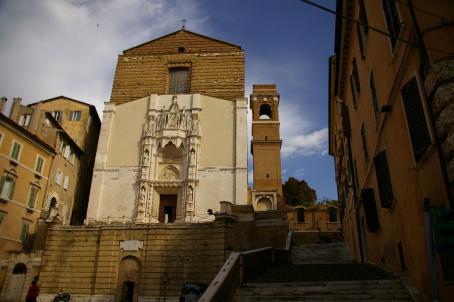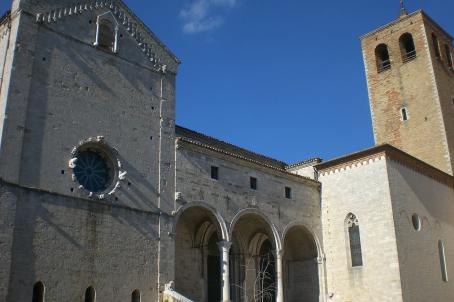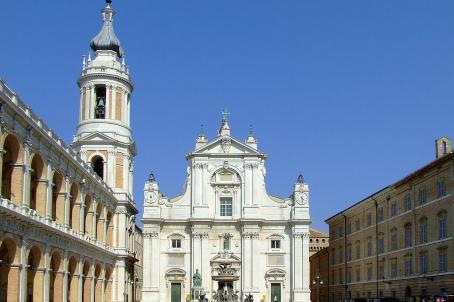Ancona Cathedral
The cathedral of Ancona, built between 996 and 1017, mixes Romanesque and Byzantine styles. The building stands on the former site of a temple dedicated to Aphrodite. The cathedral was restored in the 1980s.
The cathedral of Ancona, built between 996 and 1017, mixes Romanesque and Byzantine styles. The building stands on the former site of a temple dedicated to Aphrodite. The cathedral was restored in the 1980s.

The church of San Francesco alle Scale was founded in 1323 by the Franciscans. In 1454, the Gothic façade of the portal that still stands today was built after the Porta della Carta of the Doge's Palace in Venice. Inside was a painting considered one of the masterpieces of the Renaissance painter Nicola di Maestro Antonio d'Ancona, currently on display at the Carnegie Museum of Art in Pittsburgh.

The Cathedral of Osimo was erected in the 8th century on the site of a former pagan temple dedicated to the Greek mythological figures Asclepius and Hygieia. The cathedral is dedicated to Saint Leopard, the first bishop of the city (5th century). The cathedral is in the Romano-Gothic style and is made of white stone.

The Basilica of the Holy House is a Catholic place of pilgrimage located in the Italian municipality of Loreto. It was built around the house where, according to tradition, the Archangel Gabriel announced the divine maternity to the Virgin Mary and where the Holy Family lived in Nazareth. The house was originally located in the Holy Land, but faced with the advance of the Muslim troops, the Christians feared that it would be destroyed. Thus, a member of the powerful Angeli family (governors of Epirus) financed the move of the house to what is now Croatia in 1291. Two years later it was transported to Ancona, and on December 10, 1294, it arrived in the town of Loreto. The basilica itself, designed by Bramante, was built around the small house of Nazareth during the Renaissance.